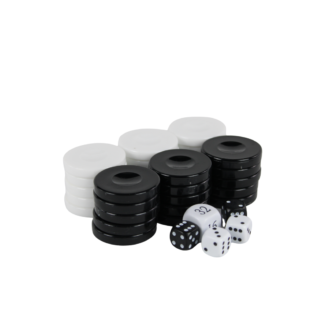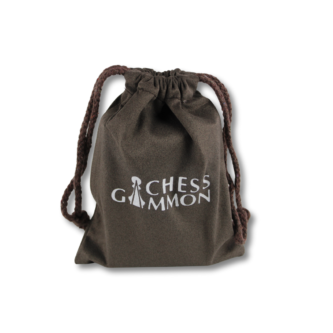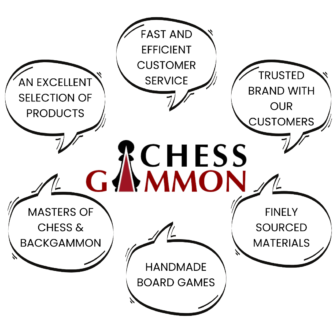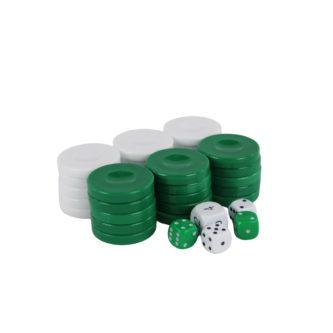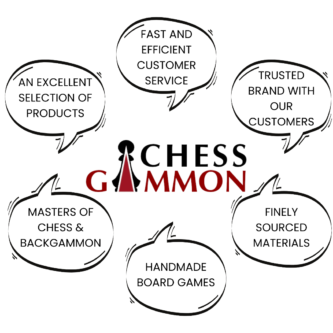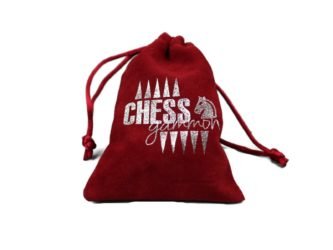Backgammon Stones
- -10%
- Select options
- Accessories, Backgammon Stones
Acrylic Black Pearl Backgammon Pieces 36 mm
-
£27.99Original price was: £27.99.£25.19Current price is: £25.19.
- -10%
- Select options
- Accessories, Backgammon Stones
Acrylic Blue Pearl Backgammon Pieces 36 mm
-
£27.99Original price was: £27.99.£25.19Current price is: £25.19.
- -10%
- Select options
- Accessories, Backgammon Stones
Acrylic Red Backgammon Pieces 36 mm
-
£24.99Original price was: £24.99.£22.49Current price is: £22.49.
End of content
No more pages to load
Backgammon Stones: The Timeless Artefacts of a Historic Game
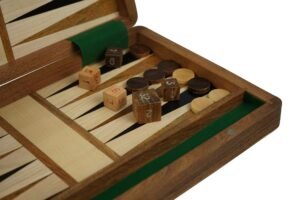
Introduction
Backgammon, one of the oldest known board games, has captivated players across cultures for millennia. At the heart of this strategic and engaging game lies a key element – backgammon stones, also known as checkers or pieces. These small, tactile objects are the essence of backgammon, allowing players to make strategic moves, plan attacks, and execute daring manoeuvres on the game board. In this article, we will explore the history, design, and cultural significance of backgammon stones, shedding light on the timeless artefacts that enrich this ancient pastime.
History of Backgammon Stones
The origins of backgammon can be traced back over 5,000 years to ancient Mesopotamia. Archaeological evidence suggests that early backgammon sets were made from a variety of materials, including wood, bone, and ivory. These materials were chosen not only for their durability but also for the artistic possibilities they presented. As the game spread through different civilizations, the design and craftsmanship of backgammon stones evolved, incorporating regional aesthetics and cultural influences.
Types of Backgammon Stones
Today, backgammon stones come in various shapes and sizes, reflecting the diversity of designs across the globe. Traditional sets often use stones that are cylindrical in shape, with flat, round surfaces for easy movement on the board. Some modern sets feature more unique shapes, such as flattened spheres or hexagons, adding a contemporary twist to the game’s traditional appearance.
Backgammon stones are typically made from materials like plastic, resin, or acrylic, which provide both durability and aesthetic appeal. Collectors and enthusiasts often seek sets made from natural materials like wood, mother-of-pearl, or semi-precious stones, appreciating the distinct beauty and craftsmanship they offer.
Design and Construction
Creating backgammon stones is a meticulous process that requires attention to detail and precision. To ensure balanced gameplay, it is essential for the stones to have uniform size and weight. Manufacturers carefully shape and polish each piece, ensuring they glide effortlessly on the game board while maintaining a stable centre of gravity.
Different backgammon sets may also feature varying colour combinations, allowing players to distinguish between their pieces easily. These colours often serve as a delightful visual element, enhancing the aesthetic appeal of the game.
Backgammon Stone Terminology
Throughout history, backgammon stones have been referred to by various names in different regions and cultures. In English, they are commonly known as “stones” or “checkers,” while other languages might use terms like “draughts” or “pips.” These varied terminologies add a linguistic dimension to the game, reflecting its widespread global appeal.
Cultural Significance
Backgammon has deep cultural significance in many regions worldwide. It has been a staple in social gatherings, family gatherings, and cafes for centuries, providing a platform for camaraderie, competition, and cultural exchange. In some societies, backgammon is an integral part of cultural rituals and traditions, fostering a sense of identity and belonging among its players.
How Backgammon Stones Impact Gameplay
Backgammon stones are the driving force behind gameplay dynamics. Their strategic movement across the board, the excitement of capturing opponents’ stones, and the satisfying feeling of bearing off all contribute to the game’s enduring popularity. Each player’s choices are heavily influenced by the positioning and movement of their stones, making every match a unique and engaging experience.
Maintaining Backgammon Stones
To preserve the beauty and longevity of backgammon stones, players must exercise proper care and maintenance. Regularly cleaning the stones with a soft, damp cloth and storing the set in a protective case or bag can help prevent damage and keep them looking pristine for generations to come.
Conclusion
Backgammon stones are much more than simple game pieces; they are a bridge between ancient traditions and modern enjoyment. Their timeless appeal, combined with the strategic complexity of the game, has ensured backgammon’s enduring popularity throughout history. As you play your next game of backgammon, take a moment to appreciate the beauty and significance of these humble yet captivating artefacts that continue to bind generations of players together in the spirit of competition and camaraderie.




